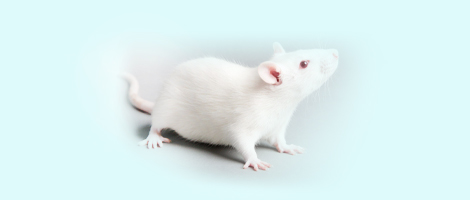| 1 |
GUDBJARTSSON T, SIGURDSSON E, GOTTFREDSSON M, et al. High altitude illness and related diseases - a review[J]. Laeknabladid, 2019, 105(11):499-507. DOI: 10.17992/lbl.2019.11.257 .
|
| 2 |
WANG R, SUN Y H, YIN Q, et al. The effects of metronidazole on cytochrome P450 activity and expression in rats after acute exposure to high altitude of 4300m[J]. Biomed Pharmacother, 2017, 85:296-302. DOI: 10.1016/j.biopha.2016.11.024 .
|
| 3 |
LI X, LI W B, FENG S L, et al. Research progress on mechanism in adaptation of hemoglobin to plateau hypoxia[J]. J Zhejiang Univ Med Sci, 2019, 48(6):674-681. DOI: 10.3785/j.issn.1008-9292.2019.12.13 .
|
| 4 |
WEI D B, WEI L N, LI X, et al. Effect of hypoxia on ldh-c expression in somatic cells of plateau pika[J]. Int J Environ Res Public Health, 2016, 13(8):773. DOI: 10.3390/ijerph13080773 .
|
| 5 |
王萌. 虎杖苷对高原肺水肿模型大鼠的防治作用及其机制研究[D]. 西安: 第四军医大学, 2011. DOI:10.7666/d.d220369 .
|
|
WANG M. The protection and therapeutic effects of polydatin on experimental high altitude pulmonary edema model of rats and its mechanism[D]. Xi'an: Fourth Military Medical University, 2011. DOI:10.7666/d.d220369 .
|
| 6 |
霍妍. 槟榔多酚对高原肺水肿的预防作用研究[D]. 兰州: 兰州大学, 2021.
|
|
HUO Y. Study on the preventive effects of betelnut polyphenols on high altitude pulmonary edema[D]. Lanzhou: Lanzhou University, 2021.
|
| 7 |
GRIMMINGER J, RICHTER M, TELLO K, et al. Thin air resulting in high pressure: mountain sickness and hypoxia-induced pulmonary hypertension[J]. Can Respir J, 2017, 2017:8381653. DOI: 10.1155/2017/8381653 .
|
| 8 |
DAVIS C, HACKETT P. Advances in the prevention and treatment of high altitude illness[J]. Emerg Med Clin North Am, 2017, 35(2):241-260. DOI: 10.1016/j.emc.2017.01.002 .
|
| 9 |
李晨. 阿什旦牦牛 降生高原[J]. 中国农村科技, 2019(7):56-58. DOI: 10.3969/j.issn.1005-9768.2019.07.019 .
|
|
LI C. Ashdan Yak: Born on the Plateau[J]. China Rural Sci Technol, 2019(7):56-58. DOI: 10.3969/j.issn.1005-9768.2019.07.019 .
|
| 10 |
李晏军. 中国杂交水稻技术发展研究(1964~2010)[D]. 南京: 南京农业大学, 2010. DOI:10.7666/d.Y1986663 .
|
|
LI Y J. A study on the advancement of hybrid rice technology in China (1964-2010)[D]. Nanjing: Nanjing Agricultural University, 2010. DOI:10.7666/d.Y1986663 .
|
| 11 |
JIA Z L, ZHAO X J, LIU X S, et al. Impacts of the plateau environment on the gut microbiota and blood clinical indexes in Han and Tibetan individuals[J]. mSystems, 2020, 5(1): e00660-e00619. DOI: 10.1128/mSystems.00660-19 .
|
| 12 |
LUO B F, WANG R, LI W B, et al. Pharmacokinetic changes of norfloxacin based on expression of MRP2 after acute exposure to high altitude at 4300m[J]. Biomed Pharmacother, 2017, 89:1078-1085. DOI: 10.1016/j.biopha. 2017. 02.092 .
|
| 13 |
SUN H, YIN C Q, LIU Q, et al. Clinical significance of routine blood test-associated inflammatory index in breast cancer patients[J]. Med Sci Monit, 2017, 23:5090-5095. DOI: 10.12659/msm.906709 .
|
| 14 |
常正义, 马迎教, 潘云, 等. 缺氧缺血性脑病患儿血常规结果分析及其临床意义[J]. 国际检验医学杂志, 2014, 35(4):394-395, 398. DOI: 10.3969/j.issn.1673-4130.2014.04.005 .
|
|
CHANG Z Y, MA Y J, PAN Y, et al. Analysis of the blood routine tests results and its clinical implications in patients with hypoxicischemic encephalopathy[J]. Int J Lab Med, 2014, 35(4):394-395, 398. DOI: 10.3969/j.issn.1673-4130.2014.04.005 .
|
| 15 |
王宁, 马慧萍, 武柠子, 等. 急性缺氧对大鼠部分生理病理变化的影响[J]. 中南药学, 2017, 15(7):883-888. DOI: 10.7539/j.issn.1672-2981.2017.07.005 .
|
|
WANG N, MA H P, WU N Z, et al. Effect of acute hypoxia on the physiological and pathological changes in rats[J]. Cent South Pharm, 2017, 15(7):883-888. DOI: 10.7539/j.issn.1672-2981.2017.07.005 .
|
| 16 |
次仁曲珍. 血生化指标检测对高原移居者出现高原病症状诊断的意义[J]. 世界最新医学信息文摘, 2016, 16(5):109-110.DOI:10.3969/j.issn.1671-3141.2016.05.083 .
|
|
Cirenquzhen. Significance of blood biochemical index detection in the diagnosis of symptoms of altitude sickness in plateau migrants[J]. World Latest Med Inf, 2016, 16(5):109-110.DOI: 10.3969/j.issn.1671-3141.2016.05.083 .
|
| 17 |
WU D, YI Y, SUN F, et al. Effects of age and sex on the hematology and blood chemistry of Tibetan macaques (Macaca thibetana)[J]. J Am Assoc Lab Anim Sci, 2014, 53(1):12-17.
|
| 18 |
TANG B Z, QU Y, MU D Z. Research progress of hypoxia inducible factor 1alpha in hypoxic-ischemic injury[J]. Chin J Reparative Reconstr Surg, 2009, 23(6):755-758.
|
| 19 |
KE Q D, COSTA M. Hypoxia-inducible factor-1 (HIF-1)[J]. Mol Pharmacol, 2006, 70(5):1469-1480. DOI: 10.1124/mol. 106. 027029 .
|
| 20 |
ROWLAND K J, YAO J J, WANG L D, et al. Up-regulation of hypoxia-inducible factor 1 alpha and hemodynamic responses following massive small bowel resection[J]. J Pediatr Surg, 2013, 48(6):1330-1339. DOI: 10.1016/j.jpedsurg. 2013.03.031 .
|
| 21 |
WANG Z W, CHEN L, HAO X R, et al. Elevated levels of interleukin-1β, interleukin-6, tumor necrosis factor-α and vascular endothelial growth factor in patients with knee articular cartilage injury[J]. World J Clin Cases, 2019, 7(11):1262-1269. DOI: 10.12998/wjcc.v7.i11.1262 .
|







 )(
)( ), 牛廷献1,2(
), 牛廷献1,2( )(
)( )
)
 )(
)( ), NIU Tingxian1,2(
), NIU Tingxian1,2( )(
)( )
)